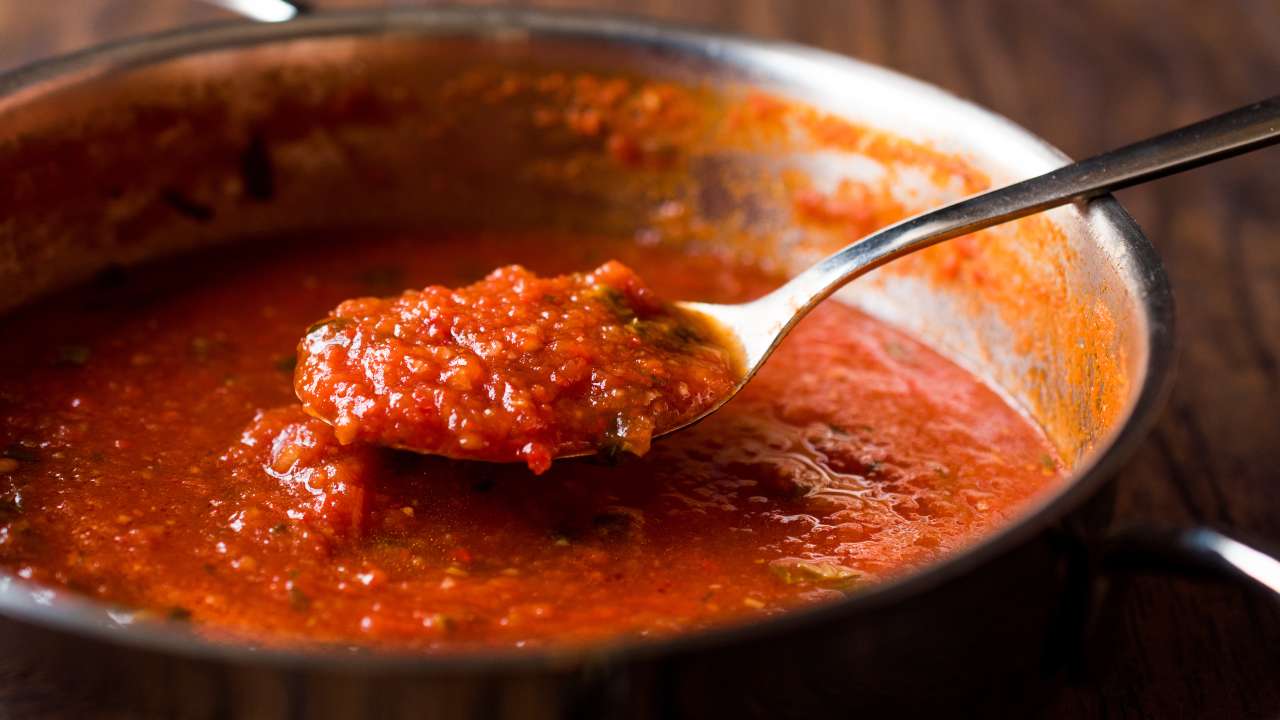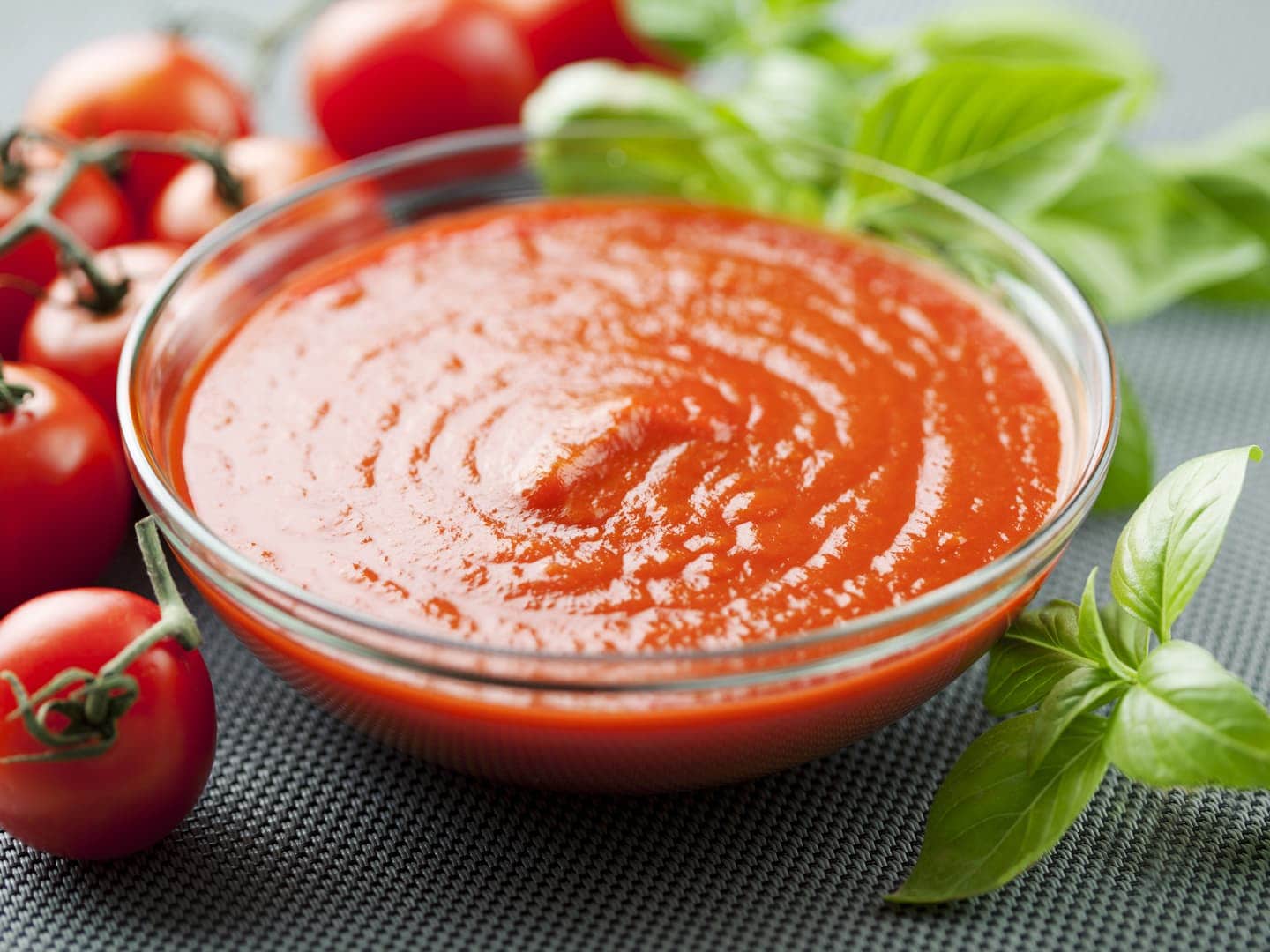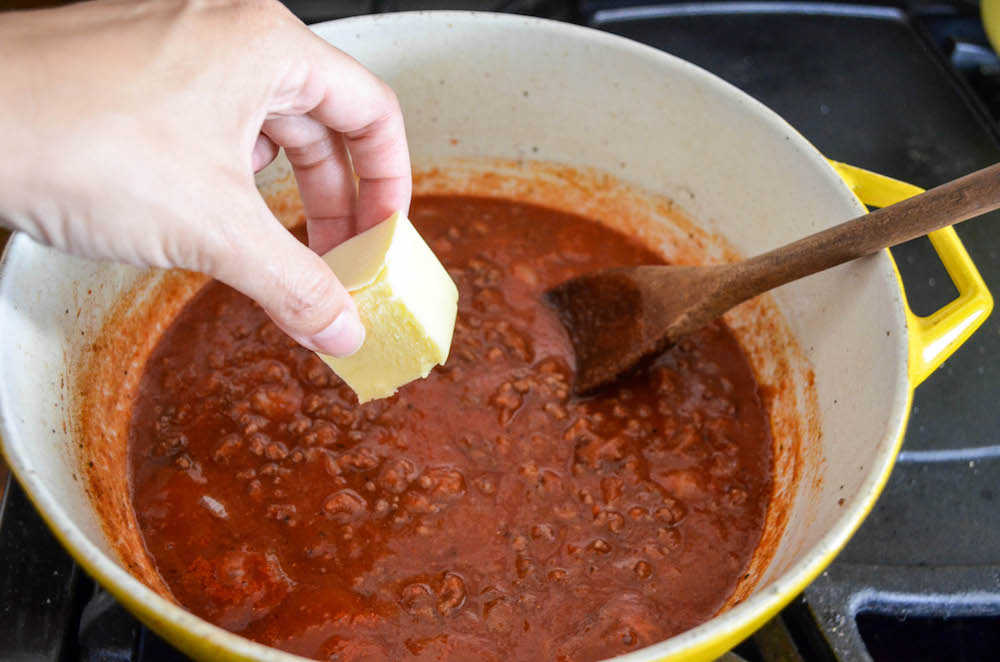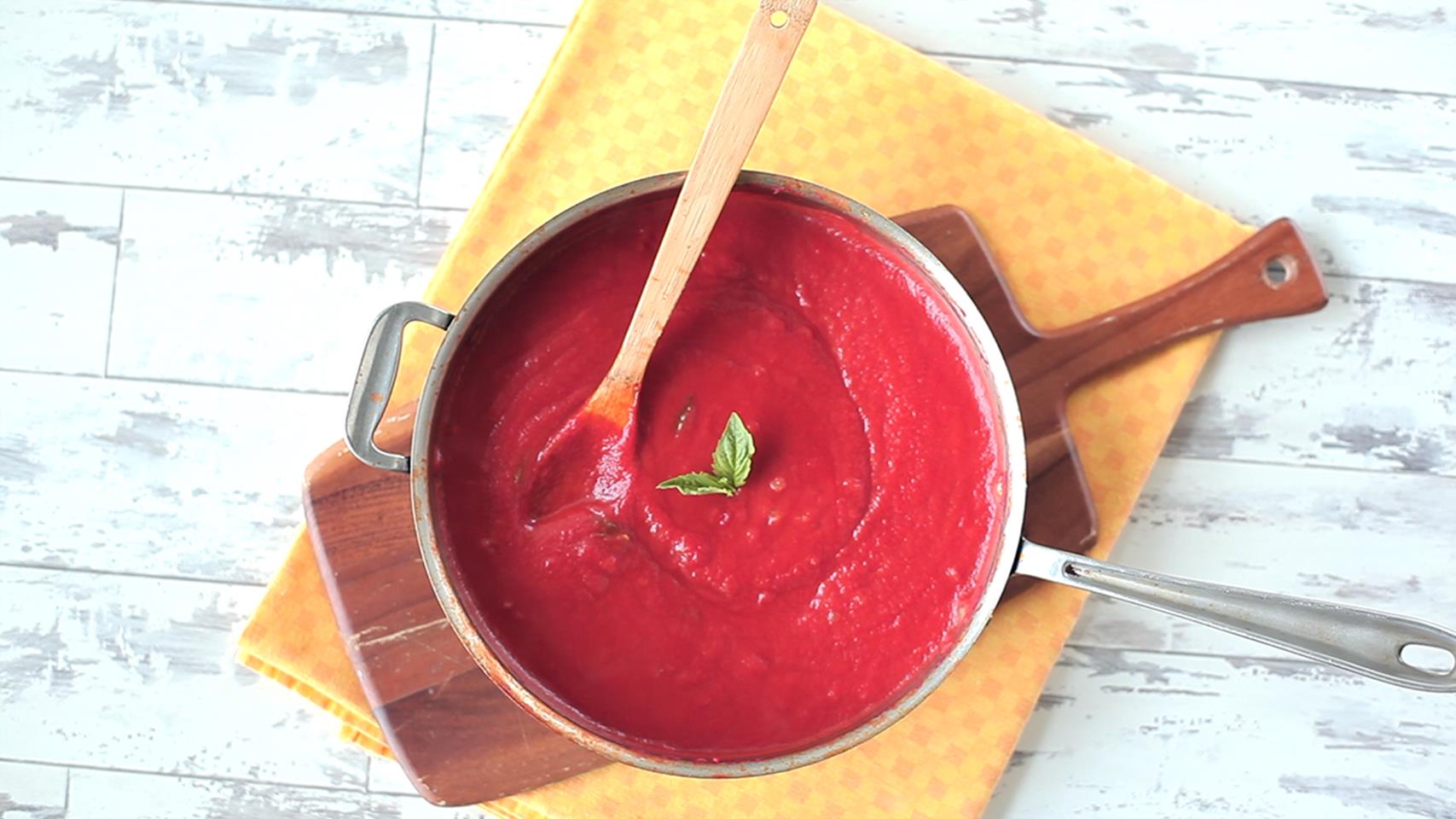Prepare to embark on a culinary adventure with our comprehensive guide to the delectable recipe for sugo sauce. This beloved Italian staple has captivated taste buds for centuries, and now it’s your turn to master its secrets.
Our step-by-step instructions will guide you through the art of crafting a rich and flavorful sugo sauce, exploring its variations and pairing suggestions. Whether you’re a seasoned chef or a novice in the kitchen, this guide will elevate your pasta dishes to new heights.
Overview of Sugo Sauce

Sugo sauce, a cornerstone of Italian cuisine, is a versatile and flavorful sauce that has captured the hearts of food enthusiasts worldwide. Its origins can be traced back to the Campania region of Italy, where it emerged as a simple yet delicious accompaniment to pasta dishes.
Over time, sugo sauce has evolved into a culinary masterpiece, showcasing the richness and diversity of Italian culinary traditions. It is a testament to the Italian passion for food and their ability to transform simple ingredients into extraordinary dishes.
Cultural Significance
Sugo sauce holds a special place in Italian culture, symbolizing family, tradition, and the joy of sharing a meal. It is a staple in many Italian households, passed down from generation to generation, with each family having its own unique recipe.
The popularity of sugo sauce extends beyond Italy’s borders. It has become a beloved ingredient in kitchens around the world, inspiring countless variations and interpretations.
Interesting Facts, Recipe for sugo sauce
- The name “sugo” comes from the Italian word “suggere,” meaning “to suck.” This refers to the way the sauce clings to pasta, encouraging diners to savor every bite.
- In some parts of Italy, sugo sauce is also known as “salsa di pomodoro” (tomato sauce) or “salsa rossa” (red sauce).
- Sugo sauce is a versatile base for many other Italian dishes, such as lasagna, eggplant parmigiana, and pizza.
Ingredients and Variations

Sugo sauce, a cornerstone of Italian cuisine, is a versatile culinary creation that exhibits regional diversity in its composition. Its foundation lies in a medley of fresh ingredients, each contributing to its distinctive flavor profile.
Essential Ingredients
- Tomatoes: The heart of sugo sauce, ripe tomatoes provide its vibrant red hue and rich, sweet taste.
- Onion: Finely chopped onions lend a subtle sweetness and depth of flavor.
- Garlic: Minced garlic adds a pungent, aromatic element that enhances the overall taste.
- Basil: Fresh basil leaves, added towards the end of cooking, provide a refreshing and aromatic touch.
- Salt and pepper: Seasoning with salt and pepper enhances the flavors of the other ingredients.
li>Olive oil: Extra virgin olive oil forms the base for sautéing the vegetables, imparting a fruity and herbaceous flavor.
Regional Variations
Sugo sauce takes on different characteristics depending on the region of Italy it originates from. For instance, in northern Italy, the sauce is often lighter and brighter, featuring more pronounced acidity from tomatoes. In central Italy, it tends to be thicker and richer, with a more pronounced umami flavor due to the addition of pancetta or sausage.
Common Substitutions and Additions
While the core ingredients of sugo sauce remain relatively consistent, there is room for experimentation and personalization. Some common substitutions and additions include:
- Canned tomatoes: When fresh tomatoes are unavailable, canned tomatoes can be used as a convenient alternative.
- Carrots and celery: Adding finely chopped carrots and celery adds sweetness and texture to the sauce.
- Red wine: A splash of red wine can enhance the depth of flavor and provide a subtle acidity.
- Sugar: A small amount of sugar can balance out the acidity of the tomatoes.
- Oregano: Along with basil, oregano is another herb that can be added for extra flavor.
Step-by-Step Cooking s

Crafting a delectable sugo sauce from scratch is a culinary adventure that yields an authentic and flavorful Italian staple. This step-by-step guide will empower you with the knowledge and techniques to create a sugo sauce that will tantalize your taste buds and elevate your culinary creations.
The journey begins with gathering the freshest ingredients and preparing them with care. Begin by finely dicing the onions and carrots. These aromatic vegetables form the flavorful base of your sauce. Next, mince the garlic cloves, releasing their pungent essence that will infuse the sauce with depth. For a touch of herbaceousness, finely chop the fresh basil leaves.
The recipe for sugo sauce is a classic Italian dish that is perfect for a weeknight meal. It’s simple to make and can be customized to your liking. If you’re looking for something a little different, try the bk royal sauce recipe . It’s a sweet and tangy sauce that is perfect for burgers, fries, or chicken tenders.
Once you’ve tried the bk royal sauce recipe, you’ll never go back to plain old sugo sauce again!
Sautéing the Aromatics
In a large skillet or Dutch oven over medium heat, heat the olive oil. Once shimmering, add the diced onions and carrots. Sauté until the onions become translucent and the carrots soften, about 5 minutes. Stir in the minced garlic and cook for an additional minute, or until fragrant. This step allows the aromatics to release their flavors and create a flavorful foundation for the sauce.
Adding the Ground Beef
Crumble the ground beef into the skillet and season generously with salt and pepper. Cook, stirring frequently, until the beef is browned and cooked through, about 10 minutes. The browning process develops a rich, savory flavor that will enhance the overall taste of the sauce.
Deglazing with Red Wine
To enhance the depth of flavor, deglaze the pan with a splash of red wine. Let it simmer for a few minutes, allowing the wine to reduce and intensify its flavors. The alcohol will evaporate, leaving behind a concentrated essence that will enrich the sauce.
Adding the Tomatoes
Incorporate the canned crushed tomatoes into the skillet. Stir well to combine all the ingredients. Bring the mixture to a simmer and let it cook for at least 30 minutes, or up to several hours. The longer the sauce simmers, the more its flavors will develop and meld together.
Finishing Touches
Once the sauce has simmered to your desired consistency, stir in the chopped basil leaves. This final addition adds a vibrant freshness that balances the richness of the sauce. Season with additional salt and pepper to taste.
Your homemade sugo sauce is now ready to be enjoyed. Serve it over your favorite pasta, or use it as a versatile base for other Italian-inspired dishes. Savor the authentic flavors and the satisfaction of creating this culinary masterpiece from scratch.
Serving Suggestions and Pairings

Sugo sauce is an incredibly versatile condiment that can be paired with a wide range of dishes. It is traditionally served with pasta, but it can also be used to enhance the flavor of meats, vegetables, and even bread.
When choosing a pasta to pair with sugo sauce, it is important to consider the texture and shape of the pasta. Short, stubby pastas like penne and rigatoni are ideal for holding onto the sauce, while longer, flatter pastas like spaghetti and linguine allow the sauce to coat them more evenly.
Meat Pairings
- Ground beef
- Italian sausage
- Pork chops
- Chicken breasts
- meatballs
Vegetable Pairings
- Zucchini
- Eggplant
- Bell peppers
- Mushrooms
- Spinach
Complementary Side Dishes and Beverages
To complete your sugo sauce dining experience, consider serving it with a side of crusty bread, a green salad, or a glass of red wine.
Variations and Adaptations

Sugo sauce offers a versatile base for culinary creativity. Let’s explore its potential for variations and adaptations!
Vegetable Medley
Experiment with adding various vegetables to your sugo sauce, such as sautéed mushrooms, bell peppers, zucchini, or spinach. These additions enhance flavor and nutritional value.
Meat and Seafood Variations
Incorporate different types of meat or seafood into your sugo sauce for a hearty twist. Ground beef, Italian sausage, or seafood like shrimp or clams add richness and depth.
Spice Explorations
Don’t be afraid to experiment with spices to customize your sugo sauce. Try adding a pinch of chili flakes for a touch of heat, oregano for an earthy flavor, or a dash of cinnamon for a subtle sweetness.
Dietary Adaptations
Sugo sauce can be easily adapted for different dietary restrictions. For gluten-free options, use gluten-free pasta or thicken the sauce with cornstarch instead of flour. For vegan variations, replace the meat with plant-based alternatives like tofu or lentils, and use vegetable broth instead of chicken or beef stock.
Beyond Pasta
Sugo sauce is not just limited to pasta dishes. It can be used as a base for soups, stews, or casseroles. Its rich flavor and versatility make it a perfect addition to a wide range of culinary creations.
Troubleshooting and Tips

Crafting a perfect sugo sauce is a culinary art, but it’s not without its challenges. Here are some common pitfalls and tips to help you troubleshoot and achieve a flavorful, satisfying sauce every time.
One common issue is a bland or watery sauce. This can be caused by using too much water or not simmering the sauce long enough. To rectify this, add a bit more tomato paste or tomato sauce to thicken it and simmer it for a longer period, allowing the flavors to develop and concentrate.
Ingredient Quality
The quality of your ingredients plays a crucial role in the final product. Opt for ripe, flavorful tomatoes and use fresh herbs whenever possible. Avoid using canned tomatoes that are overly acidic or bland, as they can compromise the taste of your sauce.
Simmering Time
Simmering is essential for developing the rich, complex flavors of sugo sauce. Allow the sauce to simmer gently for at least an hour, or even longer if time permits. This allows the flavors to meld and deepen, resulting in a more satisfying sauce.
Balancing Flavors
Sugo sauce should strike a balance between sweetness, acidity, and saltiness. If your sauce is too acidic, add a pinch of sugar or honey to balance it out. If it’s too salty, reduce the amount of salt or add a bit more water to dilute it.
Cultural and Regional Influences: Recipe For Sugo Sauce

Sugo sauce, a staple in Italian cuisine, exhibits regional variations across the country. Each region boasts unique ingredients, cooking methods, and traditions that shape the distinct flavors of their sugo sauces.
Northern Italy
- Lombardy: Sugo alla Milanese incorporates beef bone marrow, white wine, and saffron, reflecting the region’s proximity to Switzerland and France.
- Piedmont: Sugo alla Piemontese features red wine, tomatoes, and a generous amount of butter, influenced by the region’s Alpine climate and French culinary influences.
- Emilia-Romagna: Sugo alla Bolognese, perhaps the most famous sugo, is slow-simmered with a blend of ground beef, pork, and vegetables, showcasing the region’s rich culinary heritage.
Central Italy
- Tuscany: Sugo alla Fiorentina utilizes fresh tomatoes, basil, and olive oil, reflecting the region’s focus on simplicity and fresh ingredients.
- Umbria: Sugo all’Americana incorporates tomatoes, pancetta, and white wine, influenced by the region’s proximity to Rome and its culinary traditions.
- Lazio: Sugo alla Romana features tomatoes, anchovies, and capers, reflecting the region’s coastal location and Mediterranean influences.
Southern Italy
- Campania: Sugo alla Napoletana, a classic sugo, is made with tomatoes, garlic, basil, and olive oil, embodying the region’s vibrant culinary scene.
- Puglia: Sugo alla Barese includes tomatoes, onions, and bell peppers, showcasing the region’s abundance of fresh produce.
- Sicily: Sugo alla Siciliana incorporates tomatoes, eggplant, and capers, reflecting the island’s diverse culinary influences from North Africa and the Middle East.
Health Benefits and Nutritional Value

Sugo sauce is not only a culinary delight but also offers a range of health benefits. It is a rich source of vitamins, minerals, and antioxidants, making it a valuable addition to a balanced diet.
Sugo sauce is particularly high in vitamin C, an essential nutrient for immune system function and collagen production. It also contains significant amounts of potassium, which helps regulate blood pressure, and fiber, which promotes digestive health.
Antioxidants
Sugo sauce is a potent source of antioxidants, such as lycopene and beta-carotene. These compounds help protect cells from damage caused by free radicals, reducing the risk of chronic diseases such as heart disease and cancer.
Final Review

As you savor the tantalizing flavors of your homemade sugo sauce, remember that it’s not just a meal; it’s a testament to the vibrant culinary heritage of Italy. Embrace the versatility of this sauce and experiment with different ingredients and pairings to create your own unique culinary masterpiece.
Helpful Answers
What’s the secret to a flavorful sugo sauce?
The key lies in using fresh, ripe tomatoes and simmering the sauce for an extended period to allow the flavors to meld and develop.
Can I substitute other vegetables in the sugo sauce?
Absolutely! Feel free to add chopped carrots, bell peppers, or zucchini to your sauce for extra texture and nutrition.
How do I store leftover sugo sauce?
Store your sugo sauce in an airtight container in the refrigerator for up to 3 days, or freeze it for up to 3 months for longer storage.

